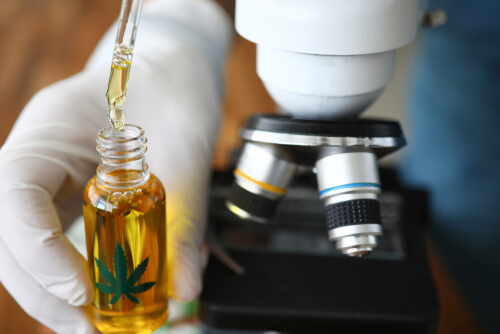
CBDA is the acidic form of CBD and is not pharmacologically active. The cannabidiol products that we get in the market are known for their high CBD content. CBD and CBDA are some among the cannabinoids in cannabis plants that offer many therapeutic benefits.
In this article, we make a comparison between CBD and CBDA.
What Is CBDA?
CBDA (cannabidiolic acid) is the inactive acidic form of CBD. All major cannabinoids in hemp are initially present in the form of Cannabigerolic acid (CBGA). CBGA is converted to three major cannabinoid precursors by various plant enzymes that are unique to each cannabis strain.
The cannabinoid precursors are:
- CBDA
- THCA (Tetrahydrocannabidiolic acid)
- CBCA (Cannabichromenic acid)
What Is CBD?
Raw cannabis strains do not contain CBD. Instead, CBD is present in the form of CBDA. The process called decarboxylation converts CBDA to CBD. The therapeutic effects of cannabidiol have encouraged its addition to numerous medicinal products used to treat wide ranging health conditions. CBD oils, tinctures, edibles and vapes are some among the popular CBD products.
How Do You Convert CBDA To CBD?
As mentioned before, decarboxylation converts CBDA to CBD and involves heating the cannabis material. The CBD products that we get in the market would be already decarboxylated. When you are using raw CBD flower to prepare CBD edibles, you have to supply enough heat for the flower to undergo decarboxylation. When you smoke CBD flower, the heat of the fmaaale is enough to decarboxylate it.
What Are The Therapeutic Benefits Of CBDA?
CBDA as well as acidic forms of other cannabinoids are not generally regarded pharmacologically active because they do not affect the endocannabinoid system the same way active cannabinoids do. Thus most of the cannabis researches is focused on CBD and THC rather than their acidic forms, CBDA and THCA.
However, the findings of new researches are beginning to challenge the idea. In a 2008 study, researchers noticed that the molecular structure of CBDA has similarities with the structure of common non-steroidal anti-inflammatory drugs. This observation suggested that CBDA can be used as an anti-inflammatory drug.
A 2013 study conducted in Canada found that CBDA has an impressive ability to bind to the serotonin receptors in our body. This finding sheds light to the possibility of using CBDA to handle nausea and anxiety. More research is needed to confirm the therapeutic potential of CBDA and to use it in various therapeutic products.

